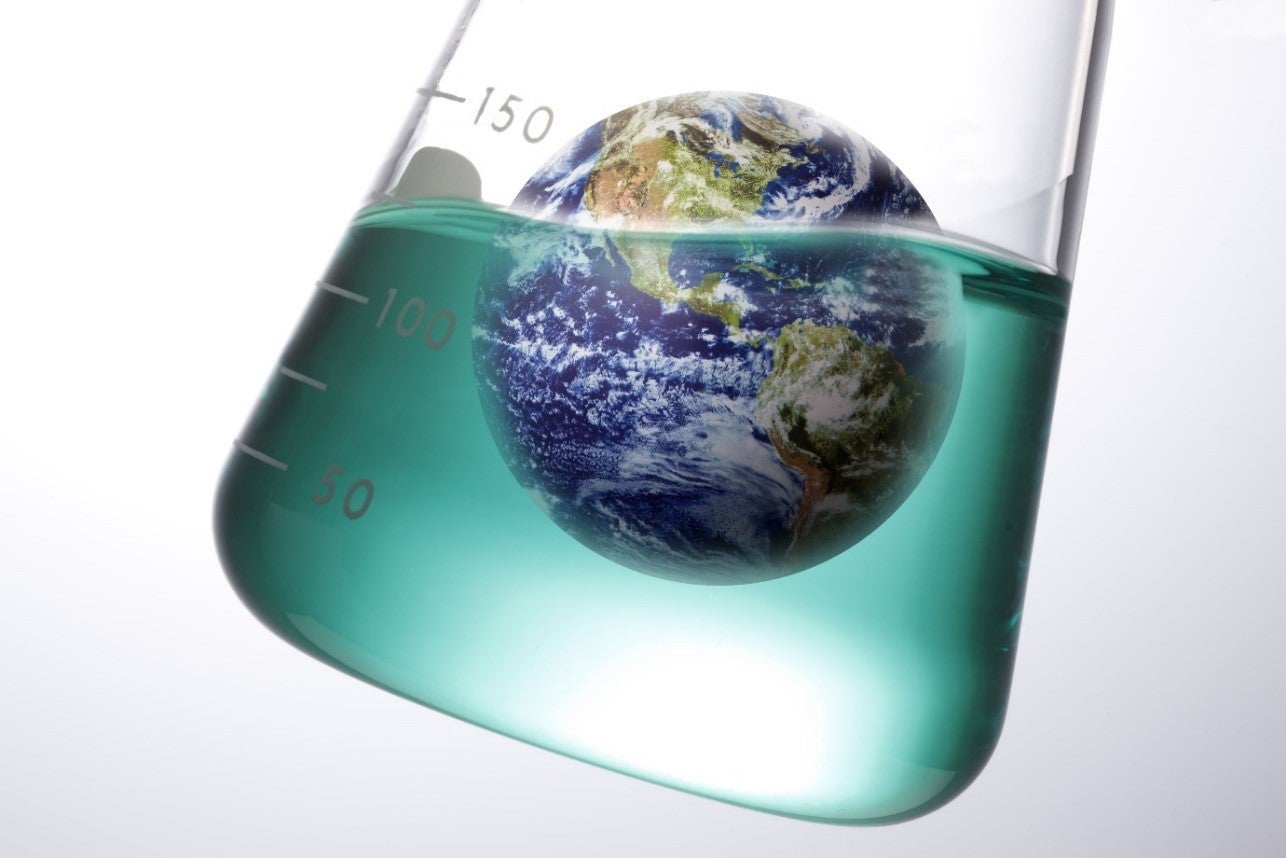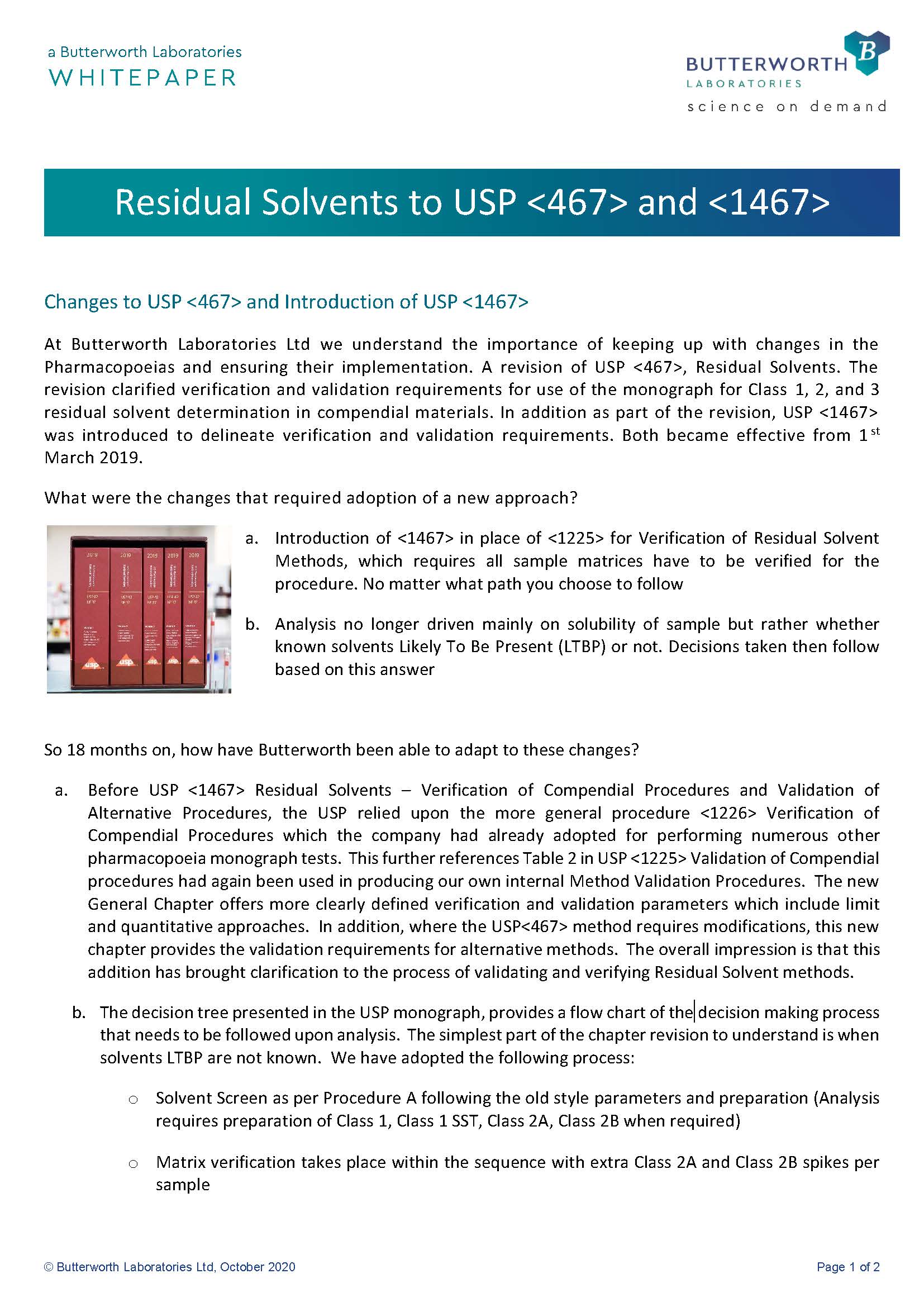
Over recent years the importance for all businesses to reduce their impact on the environment has come into sharp focus. From the Extinction Rebellion demonstrations in London in 2019, to recent television programmes by people like David Attenborough that have caught the attention of the younger generation particularly.
Yet the pharmaceutical industry is still heavily reliant on the use of petrochemicals and as global businesses, the use of paper is slowly being phased out. For some reason, this heavily regulated industry has not embraced the digital transformation with the same enthusiasm and speed that other similarly regulated industries – such as finance – have found so beneficial.
Pharmaceutical Technology spoke with John Welch, Associate Director of Business Operations of contract testing laboratory Butterworth, about how chemistry laboratories can move forward into a greener future.
“Butterworth has always considered environmental impact as a high priority,” he explains. “For example we first invested in Microwave Digestion nearly 10 years ago and at the end of 2019, we decided to start to gather together staff who had an active interest in the subject, to coordinate the company’s plans – so we engendered a lot of enthusiasm on putting a higher priority on our environmental impact.
“The first step was obvious: as a result of COVID-19 crisis and a move to home working forcing the change to established practices, many paper-based systems have already been changed to electronic procedures. So we’ve really cut down paper usage, and client audits and meetings are being carried out remotely via video systems, reducing need for travel.
The second step the British company took was at the beginning of 2020, was the creation of its Green Team – this comprises Green Champions from each department within the business. Each Green Champion regularly checks their work area and discuss with colleagues to see if there are any changes that can be made to promote a greener work environment. They record all of the suggestions and ideas on a spreadsheet for consideration with specific items allocated to individuals to research where an idea or suggestion can be implemented. A recommendation is then made to senior management for approval and where agreed the proposed actions are put into practice as quickly as possible.
As one of its first initiatives, the Green Team invited the Head of Advocacy for Tearfund, an international relief agency, who lobbies governments around the world on climate change and the green agenda. He talked and led a short discussion on how best to promote a green agenda within a company, from his own experiences of doing this within Tearfund.
“One of the things highlighted was its focus on the amount and means of travel undertaken by their employees, “Welch says. “We had already offered our staff the ability to take advantage of the government’s Ride to Work Scheme and provided loans to staff for season tickets to encourage use of public transport. However, the Covid lockdown also resulted in a 100% reduction in auditors to our site, some of whom travel from abroad. The use of remote auditing has proven to be a successful alternative which will continue to promote., moving forard. We will also be looking at how staff travel to training courses or client visits, to see how we could incentivize them to travel by train rather than car as and when the Covid crisis allows.
“The most important thing we picked up from him was the sense of full staff involvement,” he continues. “We also sensed that there was a willingness from all those who attended and took part in the discussion bought into this principle and we then had staff members volunteer to be our Green Champions. Effective environmental policies rely on everyone doing their part and willingly put forward new ideas for improvement. Although this must have top management buy in, the most effective actions can come from anywhere in the company’s hierarchy”
Welch explains: “Over the years, we have made changes such as the introduction of Microwave Digestion for Elemental Impurities analysis, replacing wet digestions involving Nitric and Sulfuric acid digestions in open beakers. This has greatly reduced the quantity of acids used as well as reducing the environmental impact. We have switched to a more sustainable energy supplier, have introduced a phased replacement of conventional lights with LEDs, which we aim to complete by 2022, and are installing new energy usage monitors as part of a new building project. Other measures have been incorporated into the building as a result of the BREAM assessment. Currently we are assessing the effectiveness of Air Condensers to replace the traditional water condensers we use, to reduce our water usage.
“One of the main focuses in 2021 will be to obtain Certification of our company by My Green Lab, a non-profit organisation formed to ‘unify and lead scientists, vendors, designers, energy providers, and others in a common drive toward a world in which all research reflects the highest standards of social and environmental responsibility. Run “for scientists, by scientists,” we leverage our credibility and track record to develop standards, oversee their implementation, and inspire the many behavioural changes that are needed throughout the scientific community.’ Their Certification is considered the global standard for laboratory sustainability best practices.
For the future, Welch says, the focus will continue to be on reducing our carbon footprint, our non-biodegradable landfill waste, our plastic consumption and an increase the use of more environmentally friendly chemicals and consumables where possible.



